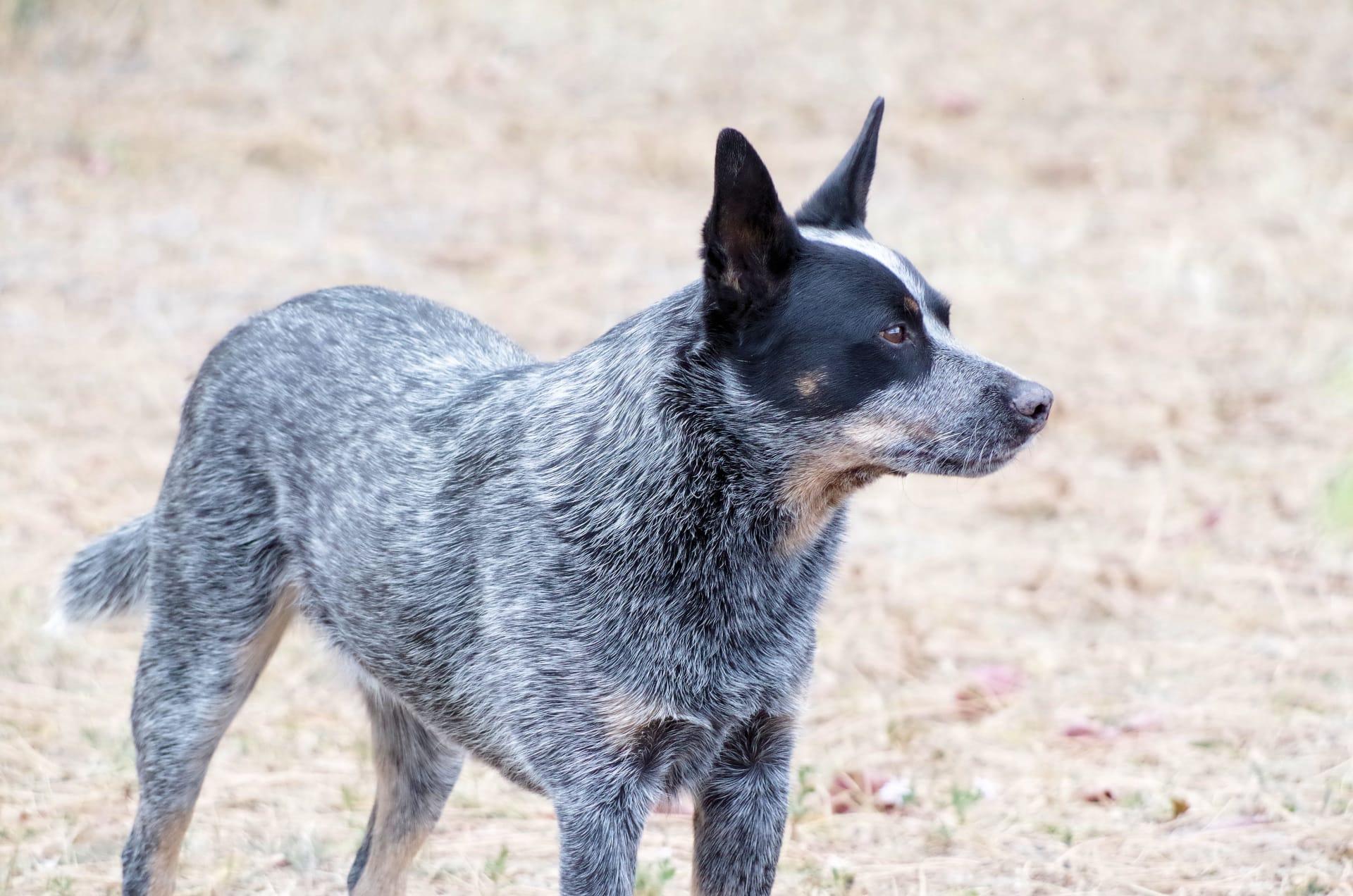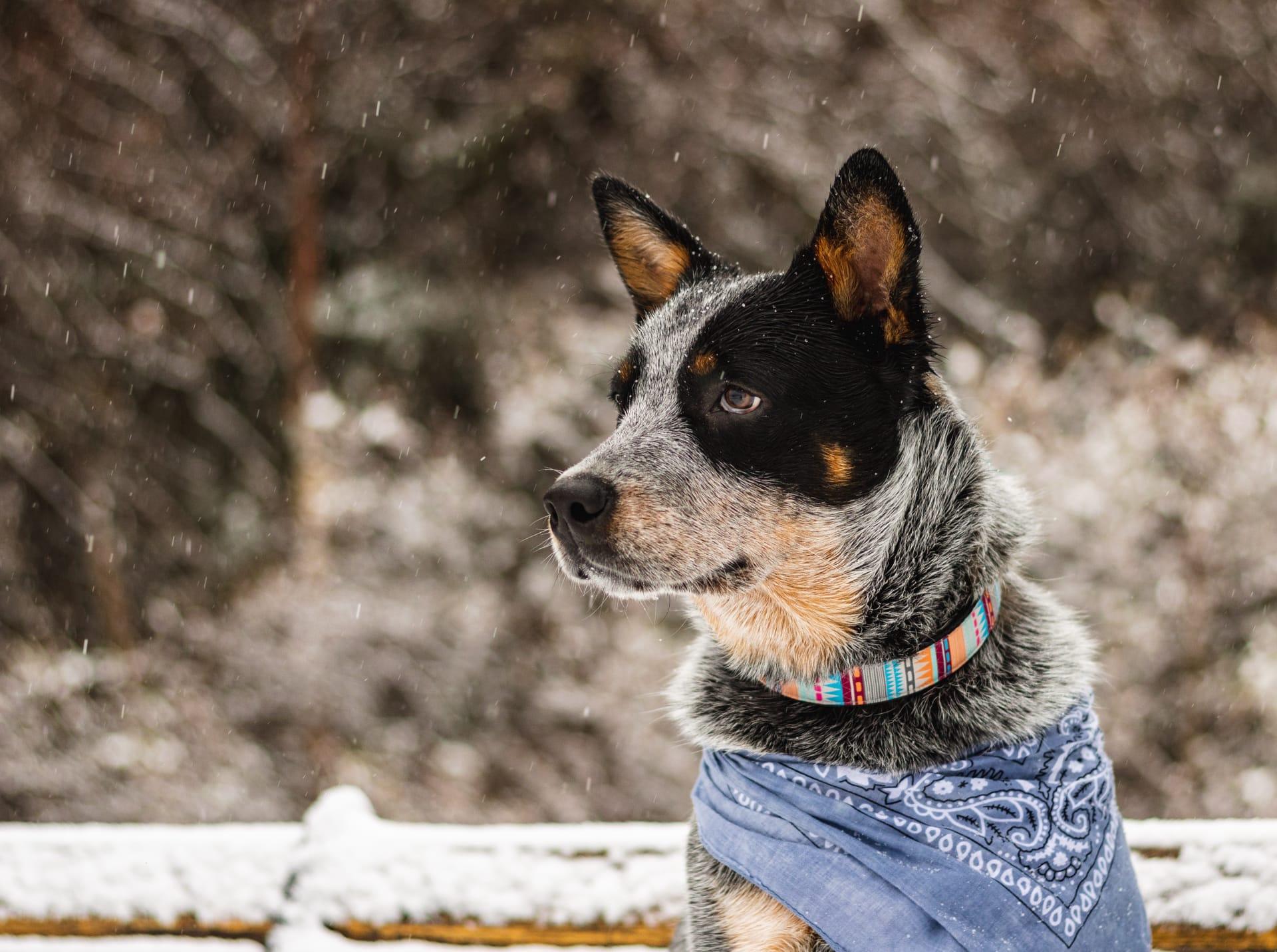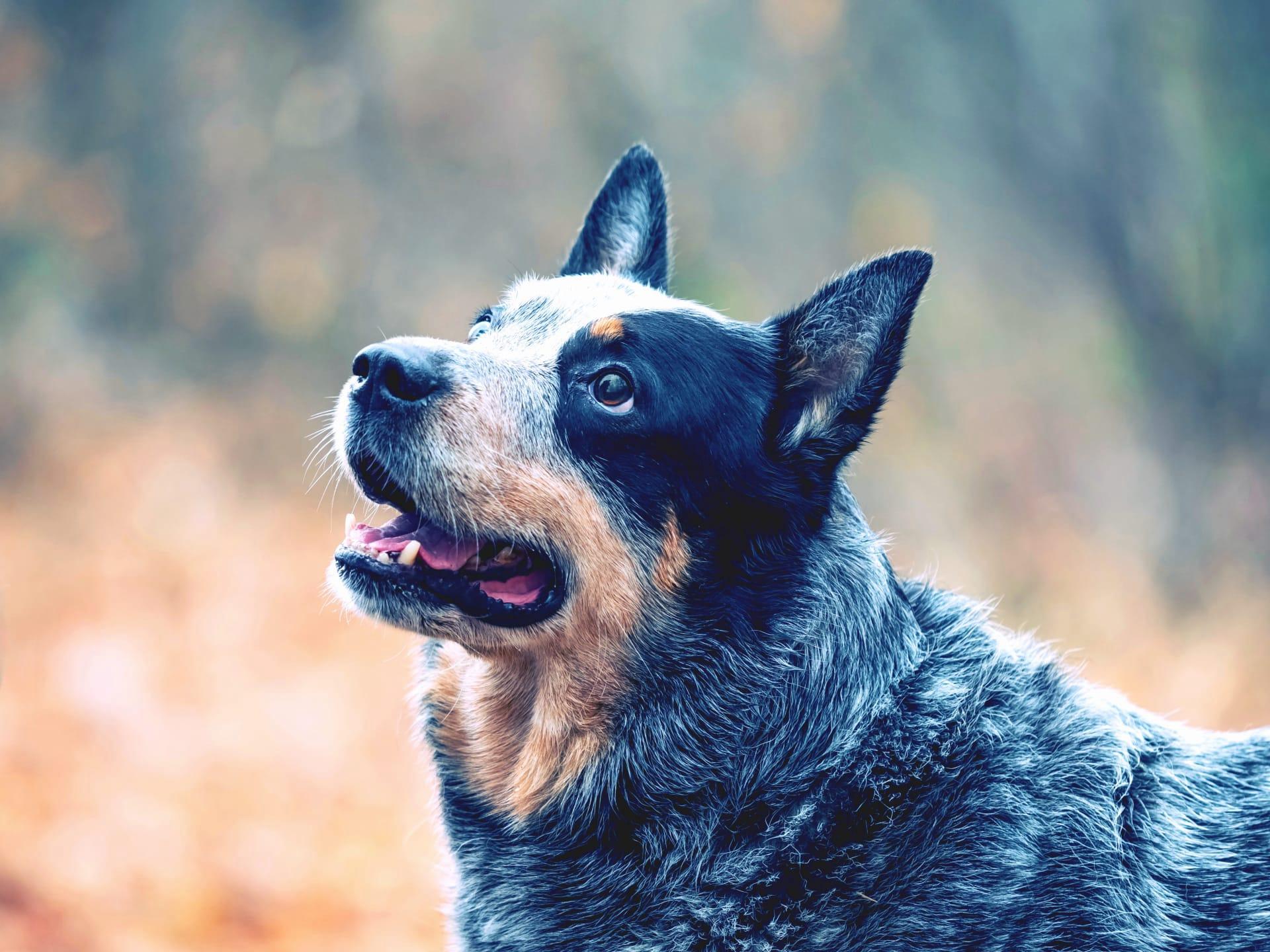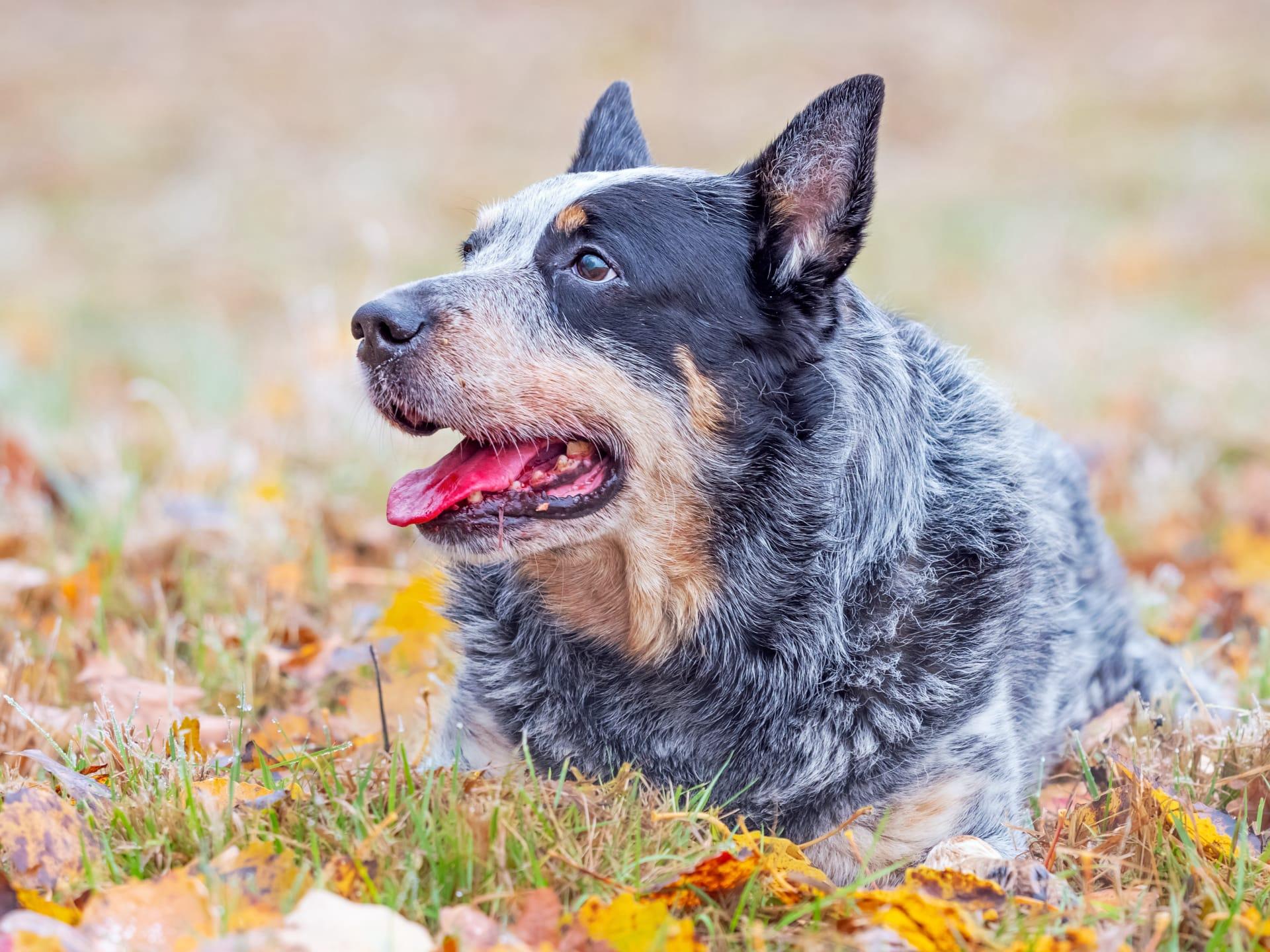1
The Blue Heeler, also known as the Australian Cattle Dog, is a breed renowned for its intelligence and agility. Initially bred by Australian settlers in the early 19th century to handle herds of cattle on expansive ranches, these dogs are a mix of domestic dogs and dingoes. This unique combination was aimed at creating a breed capable of enduring the harsh Australian outback's climate while being effective at cattle herding. The result was a highly intelligent, resilient, and energetic dog, capable of making quick decisions and possessing a natural herding instinct. Their intelligence is often highlighted by their ability to learn commands quickly and adapt to a variety of working conditions, making them indispensable to ranchers.
Blue Heelers are characterized by their distinctive coat pattern, which includes blue, blue speckled, or blue mottled coloring, often with black or tan markings. The term "Heeler" comes from their herding technique of nipping at the heels of cattle to move them forward, a method that requires precision, speed, and a deep understanding of animal behavior. This coat not only serves as a camouflage in the Australian bush but also reflects the breed's ruggedness and durability. Their coat is double-layered, with a dense, waterproof undercoat that provides insulation against extreme temperatures. This feature, combined with their sturdy build, allows Blue Heelers to work in various environments, from cold mornings to the hot midday sun, showcasing their adaptability and resilience.

2
Despite their working origins, Blue Heelers have made a seamless transition into family life, showing an unwavering loyalty and protective instinct towards their owners. This breed forms strong bonds with their family members and is known for being particularly protective of children, often taking on the role of a guardian. Their loyalty is complemented by a vigilant nature, making them excellent watchdogs. However, their protective instinct requires proper socialization from a young age to ensure they are well-adjusted and can distinguish between normal interactions and actual threats. This aspect of their personality underscores the importance of early training and socialization for a harmonious household.
The Blue Heeler's energy and intelligence demand regular, engaging activities to keep them mentally and physically stimulated. They excel in dog sports such as agility, obedience, and herding trials, where they can channel their energy and natural abilities. These activities not only provide them with the necessary exercise but also strengthen the bond between dog and owner. Without adequate physical and mental stimulation, Blue Heelers can become bored and may resort to undesirable behaviors, such as excessive barking or chewing. Therefore, they are best suited for active individuals or families who can dedicate time to their training, exercise, and mental engagement.

3
One of the most remarkable traits of the Blue Heeler is their longevity and robust health. These dogs are known to live up to 13-15 years, a testament to their hardy nature and the careful breeding practices that have minimized genetic health issues. Their long lifespan is also attributed to their active lifestyle, which helps maintain physical health and mental acuity well into their senior years. Regular veterinary check-ups and a balanced diet play crucial roles in sustaining their health, alongside their innate resilience.
Blue Heelers have a unique way of communicating with their owners through a range of vocalizations and body language. They are not just barkers; they also use growls, whines, and purrs to express their needs, desires, and emotions. This communicative ability is a double-edged sword, as it requires owners to understand and respond to their dog's cues effectively. Ignoring or misinterpreting these signals can lead to frustration on both sides. Therefore, learning to interpret and respond to a Blue Heeler's "language" is crucial for a harmonious relationship, highlighting the breed's complex nature and the need for attentive, engaged ownership.

4
Historically, Blue Heelers have played a significant role in Australian culture, symbolizing the rugged outback and the spirit of Australian settlers. They have been featured in movies, television shows, and literature, celebrating their contributions to Australian society and the unique bond between the breed and their human counterparts. This cultural representation has elevated the breed's status and recognition worldwide, showcasing their versatility, loyalty, and iconic status as an Australian national treasure.
Innovative breeding strategies were crucial in the development of the Blue Heeler. The breed was refined over decades, starting in the 1800s, by combining various breeds such as the Collie, Dingo, Dalmatian, and Bull Terrier. This genetic diversity contributed to the Blue Heeler's agility, intelligence, and distinctive appearance. The inclusion of the Dalmatian, for instance, introduced the breed's unique spotted coat, while the Bull Terrier's influence is seen in their tenacity and strength. This deliberate and careful blending of breeds underscores the breeders' objectives to create a dog that was not only adept at herding cattle but also resilient, intelligent, and adaptable to the Australian landscape.

5
Blue Heelers have an innate ability to work independently, making decisions on the spot without direct human intervention, a trait that was critical for managing livestock in remote Australian fields. This independence, however, does not mean they prefer to be alone; they thrive on companionship and being part of a pack, whether with humans or other dogs. This duality of needing independence for work yet desiring close bonds with their family is a unique aspect of their personality, reflecting their complex nature as both working dogs and loyal companions.
The breed's adaptability extends beyond just physical environments; Blue Heelers have also been successfully employed in roles such as service and therapy dogs, showcasing their versatility. Their intelligence, combined with their eagerness to please, makes them well-suited for these roles, where they provide assistance, comfort, and companionship to those in need. This adaptability highlights the breed's ability to not only excel in the fields and farms for which they were originally bred but also in diverse roles that benefit society, demonstrating their multifaceted capabilities and the depth of their intelligence and empathy.